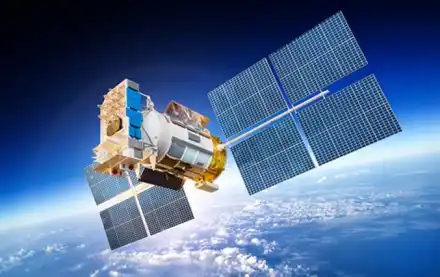




Lockheed

Much like driving a new car out of the lot, satellites that are launched into space see their onboard systems begin aging once they are just three inches off the ground. Once a satellite is on-orbit, or reached its target position in space, its operators work within the mission-defined parameters incorporated during the spacecraft’s production with little to no ability to adjust to changing mission needs.
Realizing the need for satellites to adapt to changing mission needs quickly in dynamic environments and stay relevant for the long haul, Lockheed Martin developed SmartSat™.
Why SmartSat Matters
Built into satellites during initial development, SmartSat is a software-defined satellite architecture that lets users upload capability and assign new missions to satellites post-launch, on-orbit. This capability breathes new life into satellites, allowing them to adapt to changing mission needs, extending their operational relevance.
“Think of SmartSat as being similar to a software update for your smartphone. New features can be added to existing hardware thanks to an ‘over-the-air’ software push from the manufacturer,” said Eric Brown, vice president, Mission Strategy & Advanced Capabilities at Lockheed Martin Space. “With SmartSat, Lockheed Martin has developed a capability to adjust satellite missions through software updates that dynamically adapt to mission needs in near real-time by mission operators and decision makers on the ground. This can be a game changer for our military.”
LM LINUSS and : A Real Life SmartSat Example
Recently, Lockheed Martin collaborated with Filecoin Foundation to demonstrate a space-to-ground communication use case for Interplanetary File System (IPFS), a decentralized protocol for storing and sharing data that uses content-addressing to uniquely identify files. The demo helped identify applications for future deep space communications.
The demo upload IPFS software on one of already-on-orbit, SmartSat-enabled, LM LINUSS™ satellites. Earlier in 2023, the LM LINUSS demonstrated how cubesats could manoeuvre and perform on-orbit satellite servicing. During the IPFS demo in late 2023,SmartSat successfully transmitted data back and forth between Earth and an orbiting LM LINUSS CubeSat.
SmartSat™ Enables Next-gen Digital Satellites
In addition to supporting dynamically evolving mission needs, SmartSat-enabled satellites are equipped with a number of advanced technologies that build upon resilience, autonomy and efficiency. These technologies enable satellites to:
Better detect and defend against cyber threats autonomously, while on-board cyber defences can be updated regularly to address new threats.
Reset themselves faster, diagnose issues with greater precision and back each other up when needed, significantly enhancing resiliency.
Process more data in orbit so they can beam down just the most critical and relevant information—saving bandwidth costs and reducing the burden on ground station analysts, and ultimately opening the door for tomorrow's data centres in space.
“SmartSat and its core capabilities will be a key enabler of future mission needs that can reduce lifecycle costs while increasing innovation,” Brown added.
On Orbit Today to Address Tomorrow’s Needs
SmartSat’s mission flexibility, enhancement and resiliency capability is already on-orbit today. SmartSat is part of several Lockheed Martin’s demonstrator satellites, including one Pony Express 1 satellite, launched in 2019, and LM LINUSS satellites launched in 2022. It is also hosted on about 10 Space Development Agency Transport Layer Tranche 0 satellites launched in 2023.
Soon, SmartSat is expected to launch on two Pony Express 2 satellites and the company’s Tactical Satellite demonstrator. The digital satellite enabler is also scheduled to launch on the U.S. Space Force’s three future Missile Track Custody LM 400 satellites, as well as all future LM 400s on the mid-sized satellite’s production line.
“We recognize that space is a constantly changing environment and that our customer's missions can rapidly evolve,” says Brown. “SmartSat enables our warfighters to adapt to any changes with a simple software upload to any SmartSat-equipped satellite.”
Wait... You Can Update Space Hardware, Too
SmartSat on its own provides tremendous power to future satellites, but when you combine it with the capability to augment space hardware, it’s a true game-changer for extending the relevant life of a satellite.
Enter Lockheed Martin’s Augmentation System Port INterface (ASPIN), an innovative interface that can allow on-orbit servicing SmallSats to dock with larger spacecraft to add new hardware. To further support the on-orbit servicing industry, in 2022, Lockheed Martin also introduced the Mission Augmentation Port (MAP) open-source non-proprietary interface industry standard for spacecraft docking.
An ASPIN docking port is intended as a standard feature of the evolved Lockheed Martin LM2100 bus, which will onramp to future LM2100 and other space vehicles, and as part of our tendered bid to JP9102.
“Combined, SmartSat and ASPIN will be key enablers for evolving satellites to address future mission needs while reducing lifecycle costs,” Brown added.